Embroidery expert Tanya Bentham showcases her replica medieval costumes at llkley Manor House fashion show
Fashion is a key that unlocks history, offering an intriguing and very real glimpse into the lives of our ancestors, from queens to peasants.
What they wore tells us much about what they did on ordinary days, and what mattered to them on special days.
Advertisement
Hide AdAdvertisement
Hide Ad“The whole point of that dress is saying, ‘look, I don't work, I have servants doing things for me’,” says medieval embroidery and costume expert Tanya Bentham, looking at a modern-day photograph of herself with her friend, Dr Marta Cobb, who has her arms lifted to show off the long, sweeping sleeves of a 12th-century Norman court gown. Known as a bliaud, it is a replica made by Tanya in silk brocade by Czech specialist clothmakers Sartor.
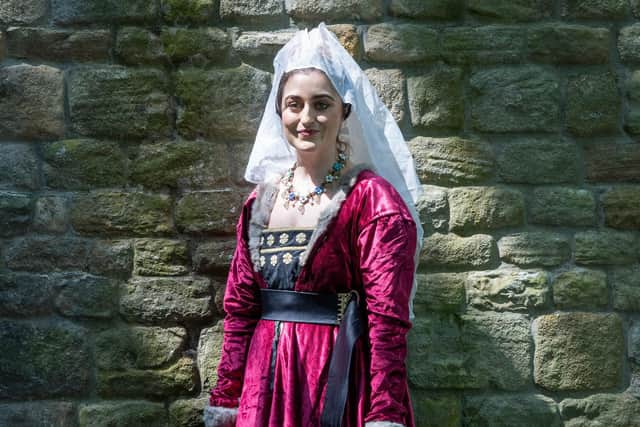

The picture is one of a series taken by photographer and fine artist Laura Mate at Ilkley Manor House in May this year, when it staged a Medieval Fashion Show, with volunteers taking to the runway modelling a series of Tanya’s replica outfits.
Tanya also compered the show, treating the audience to her extraordinary insight into the history and making of the medieval costumes.
Ilkley Manor House dates from around 1340 and is one of the oldest domestic buildings in West Yorkshire. Volunteer Gill Johnson modelled a 13th century peasant costume consisting of a brown, rather tweedy, woven sideless cyclas, or unfitted tabard-like overdress, over a linen kirtle.
Advertisement
Hide AdAdvertisement
Hide Ad“She is dressed for being out in the fields at harvest time and has a smocked apron to wipe her hands on,” says Tanya. A cyclas like this one would have been a protective garment, giving warmth.
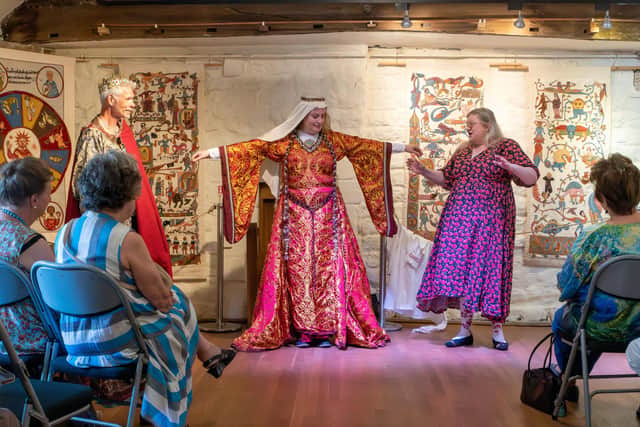

“It’s very much what we see in the Luttrell Psalter,” says Tanya, adding that she is more than a little obsessed with this famous medieval manuscript and its rich illustrations of everyday rural life in the 14th century.
“Overdresses were worn by men and women, but by men generally as a professional overgarment - a doctor or surgeon might wear one in much the same way as a modern doctor might wear scrubs, as a protective overgarment,” she says.
Few actual garments remain from the medieval era, so images from the period provide evidence instead.
Advertisement
Hide AdAdvertisement
Hide Ad“Even the lower nobility would have worn wool,” says Tanya. “There were strict sumptuary laws about what kind of wool you could wear and what level of society you had to be to wear plain silk, and then brocaded silk and then silk with velvet and then silk with cloth of gold.
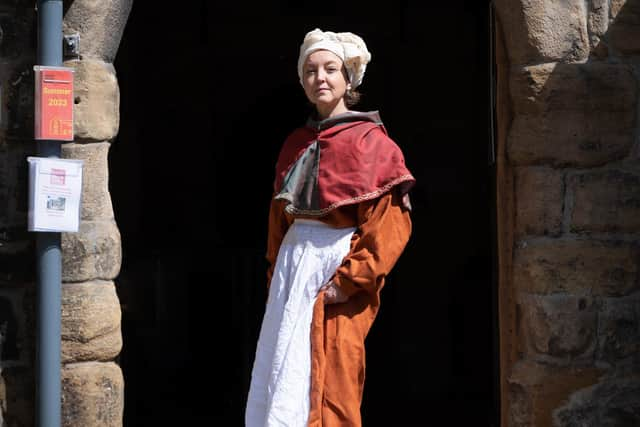

“Sumptuary laws are what I would call ‘shut the door’ laws that they reissued on a regular basis to reemphasise and keep people in their place. But you don’t reissue a law if everybody is obeying it.
"The frequency with which sumptuary laws are reissued tells you a lot about how wealth is moving through society. If there is a lot of wealth at a lower level, people will dress about their station.”
Tanya is a world-renowned medieval embroiderer who specialises in Opus Anglicanum, English work, a phrase coined in the 13th century to describe the embroideries made in England of gold and silver thread with silk.
Advertisement
Hide AdAdvertisement
Hide AdShe lives in Adel, Leeds, and over lockdown completed two books on medieval embroidery, the first called Opus Anglicanum, published in 2021.
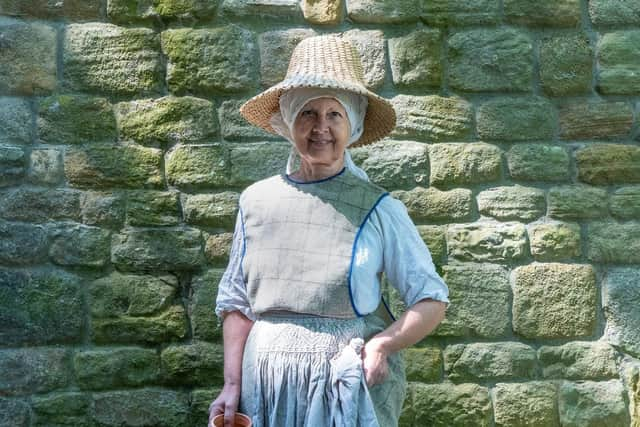

“I wanted to revive Opus Anglicanum as a vibrant artistic style of embroidery, not for it to be seen just as a museum piece,” she says. “I do modern pieces in the style of medieval embroidery.”
Her second book, published in 2022, is called Bayeux stitch, and she also has a podcast called Stitchery Stories.
Her embroidery piece called The Three Living and the Three Dead won Most Innovative Use of Textiles at the Fine Art Textiles Awards 2022.
Advertisement
Hide AdAdvertisement
Hide AdThrough her website she sells embroidery kits of her designs, including one inspired by the late Queen Elizabeth, called Queenie.
She finds her ideas in medieval sculptures, paintings, manuscript, prayer books, marginalia and surviving tapestries. “There were equal numbers of men and women working on tapestries, although the women got 10 per cent of what the men got,” she says.
Originally from County Durham, Tanya got into making costumes aged 15. “I really liked pretty frocks so I joined the English Civil War Society and became a Royalist, basically because I was 15 and shallow, and the Royalists had better frocks,” she says.
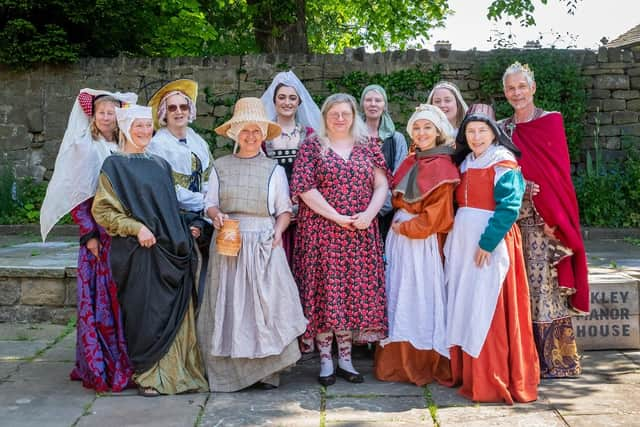

She is self-taught and enjoys making high status costumes, which can cost £5-6,000 if done properly. “A lot of people who are into reenactment have really done their research over the years,” she says.
Advertisement
Hide AdAdvertisement
Hide AdShe has a degree in Classics from Newcastle University and has spent 20 years working in history in education, going into schools dressed as a Viking or Greek or Roman woman, making her own and children’s costumes. She still does this, but says her embroidery strands now take most of her working time.
She learned silversmithing to be able to create authentic jewellery, based on originals and portraits. “I always sewn my costumes as well and tried as far as I can to do an authentic construction. There is more and more research going on about how to do this stuff properly.”
You can find out more about Tanya Bentham at www.opusanglicanumembroidery.com. Ilkley Manor House is open every weekend 11am-4pm. Entrance free, see www.ilkleymanorhouse.org for event details. Find out about Opening the Wardrobe is at Bankfield Museum in Halifax.
Tanya has just delivered to her publisher her third book, called Naughty Mediaeval Embroidery. “It’s all the boobs, bums and willies,” she says. “Really puerile, which a lot of medieval art is.”
